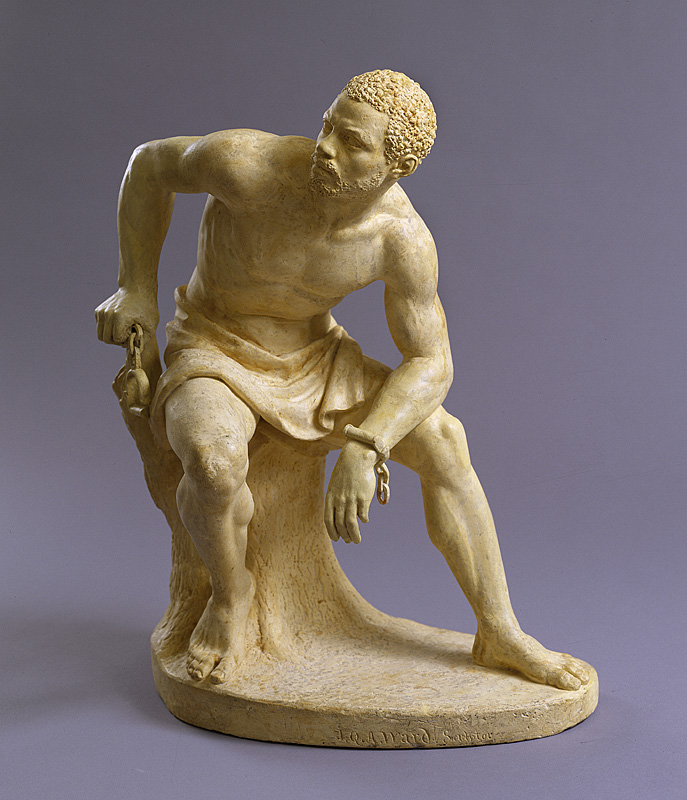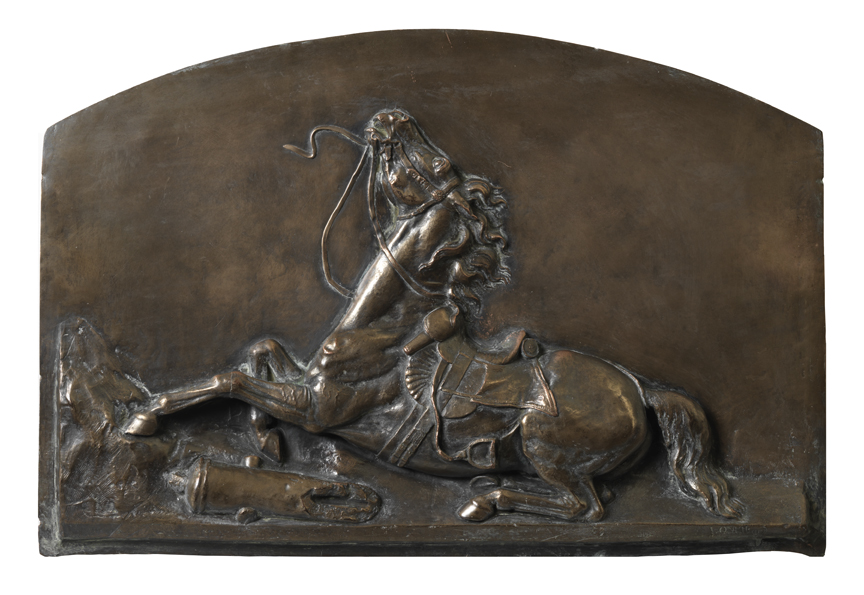
Freedman
John Quincy Adams Ward
Ward, who received his artistic training in the United States, was a revitalizing force in American sculpture during the third quarter of the nineteenth century, being one of the first native sculptors to reject European Neoclassicism for a more naturalistic style. A popular work available in multiple castings, "Freedman" was first exhibited at the Pennsylvania Academy in 1863 and remained there until the artist presented it in 1866. Several bronze casts of the piece exist in other collections. The sculpture may be viewed as both a commemoration of the Emancipation Proclamation and an expression of Ward's own abolitionist sentiments. The idealized subject, poised between bondage and freedom, was understood by contemporary viewers to be an eloquent symbol of a tragic past and hopeful future. Having grown up in Ohio farm country, Ward had been acquainted with several black families, and he paid tribute in a 1908 newspaper essay to a childhood friend called Uncle Caesar. The "Freedman" is nor a portrait, however, but rather an idealization created by selecting features from several models. Although when first exhibited "Freedman" was seen as lacking classical prototypes, recent scholarship has noted its relationship to the Greek torso Belvedere, and indeed Ward's appreciation and study of classical sculpture is well documented.
Artist
Date of Birth
(1830-1910)
Date
1863
Medium
Plaster, tinted yellow ochre
Dimensions
21 x 18 x 10 in. (53.34 x 45.72 x 25.4 cm.)
Accession #
1866.2
Credit Line
Gift of the artist
Copyright
No known copyright restrictions
Category
Subject
We're so excited you're planning to visit PAFA!
Make time for art — visit us Thursday to Sunday.
Before reserving your tickets, please review helpful information about museum hours, accessibility, building access, and special admission programs.
If you have any questions, feel free to reach out to us at visitorservices@pafa.org — we’d love to help!
